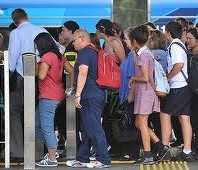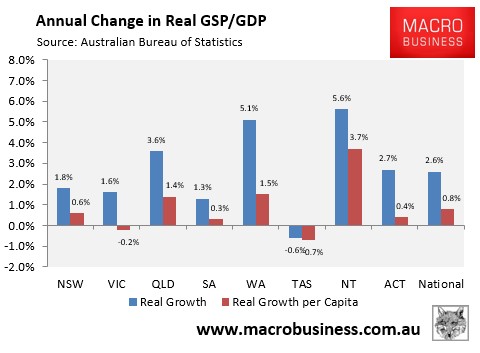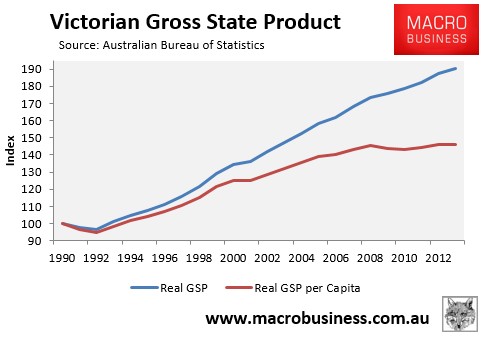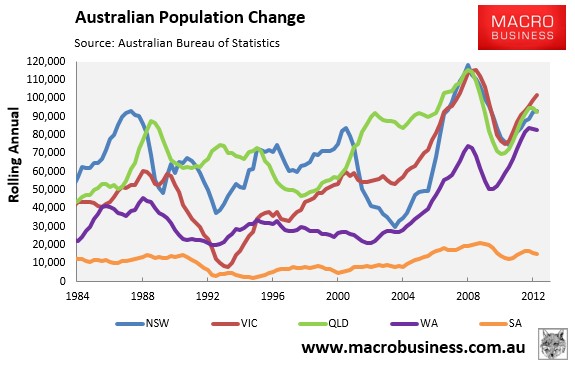
In 2010, Monash University’s director of the centre for population and urban research, Bob Birrell, labelled Melbourne a “parasite economy” in reference to way in which the state sucks financial resources from the mining states in order to support its growing population:
”Increasingly, the fiscal dividend from Australia’s mineral boom is having to be distributed to Victoria to pay for the needs of Melbourne’s population boom”…
”While the other boom states have been driven by mining exports, Victoria’s boom has been driven by high immigration… This created a buoyant economy, thanks to a rapidly-growing people servicing sector and migrant servicing sector”.
In other words, Melbourne is growing for the sake of growing, racing towards a population of 5 million, using other people’s money. Just how big is that great sucking force from the south? Enormous. In the 2008-09 financial year, Victoria imported $70.2 billion in goods and services. It produced only $34.5 billion in exports, less than half its imports, a deficit of $35.7 billion…
”Melbourne now requires increased financial assistance . . . to pay for its city building to keep up with all this population growth,” Birrell says.
Birrell also argued that Melbourne’s population boom offered minimal benefits to the pre-existing population:
By far the greatest beneficiaries of high immigration are the immigrants, not the resident population.
High immigration lowers per capita productivity growth, a key to sustainable growth.
It retards the growth of per capita wealth.
It accelerates the rate of food importation. (Australia imported a record $8.5 billion worth of food in 2008-09.)
It accelerates the increase in urban overcrowding and traffic congestion.
It increases Australia’s greenhouse emissions, per capita.
It makes it unlikely Australia can meet its targets of greenhouse gas emission reduction.
It lowers Australia’s food security.
The release yesterday of the annual state accounts by the Australian Bureau of Statistics (ABS) supports Birrell’s contention, with Victorian real Gross State Product (GSP) growing by 1.6% in the year to June 2013, but falling by 0.2% when measured on a per capita basis (see next chart).

To make matters worse, real GSP per capita in Victoria has shown essentially no growth since June 2008, meaning that Victorians have treaded water, at least from a narrow economic perspective (see next chart).

I know that the counter-factual case might suggest that without the population ponzi living standards could have fallen further. But this is a false economy to my mind. Given that Victoria is leading the nation for population growth (see next chart), the deleterious implications of high population growth on living standards, and that high population growth cannot alleviate the effects of an ageing population anyway, what is the Victorian Government’s end-game? How does it propose to create an economy based on real and sustainable growth?

These are questions that all Australians should be asking as well.

